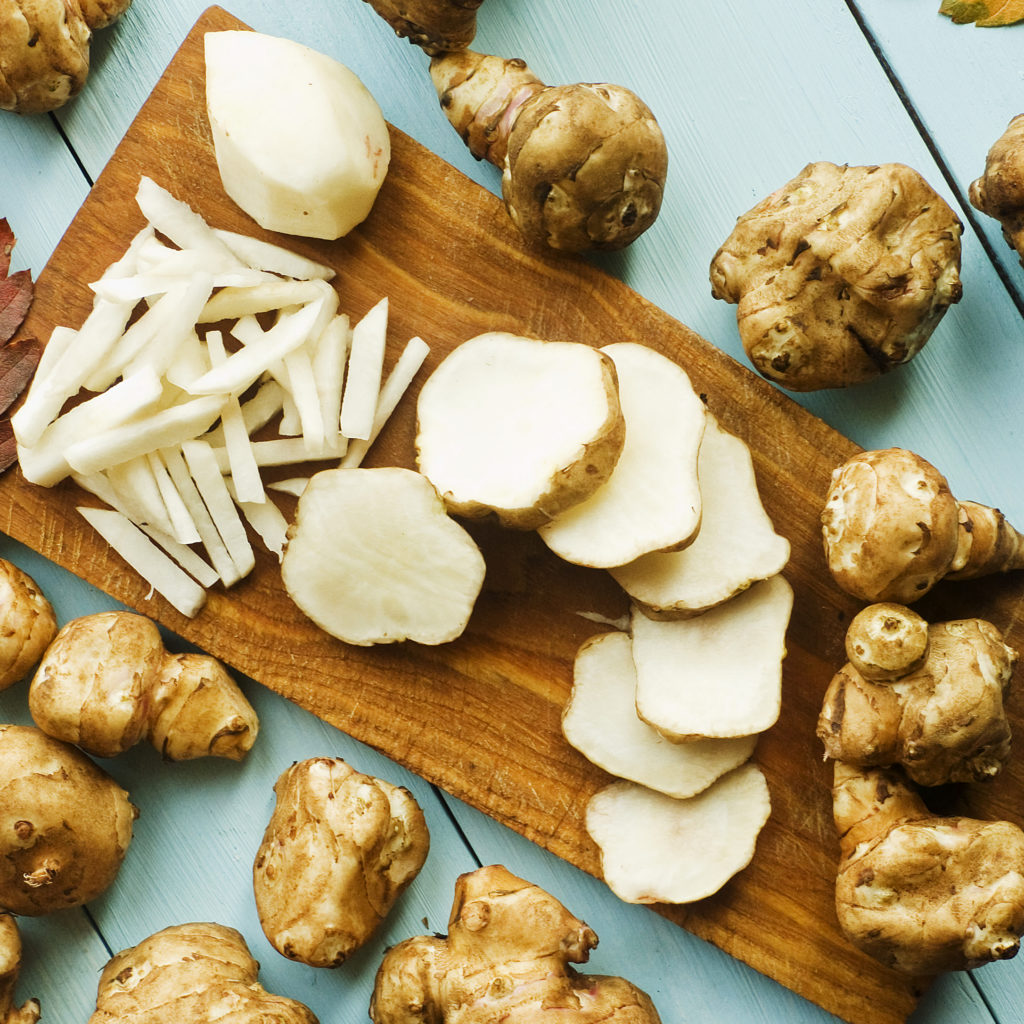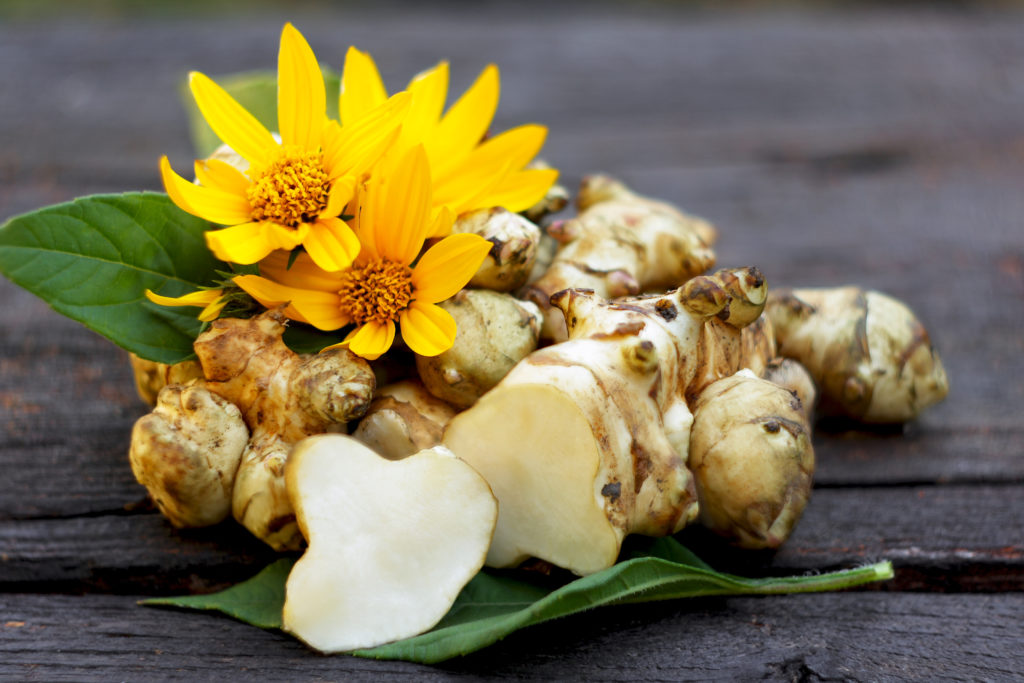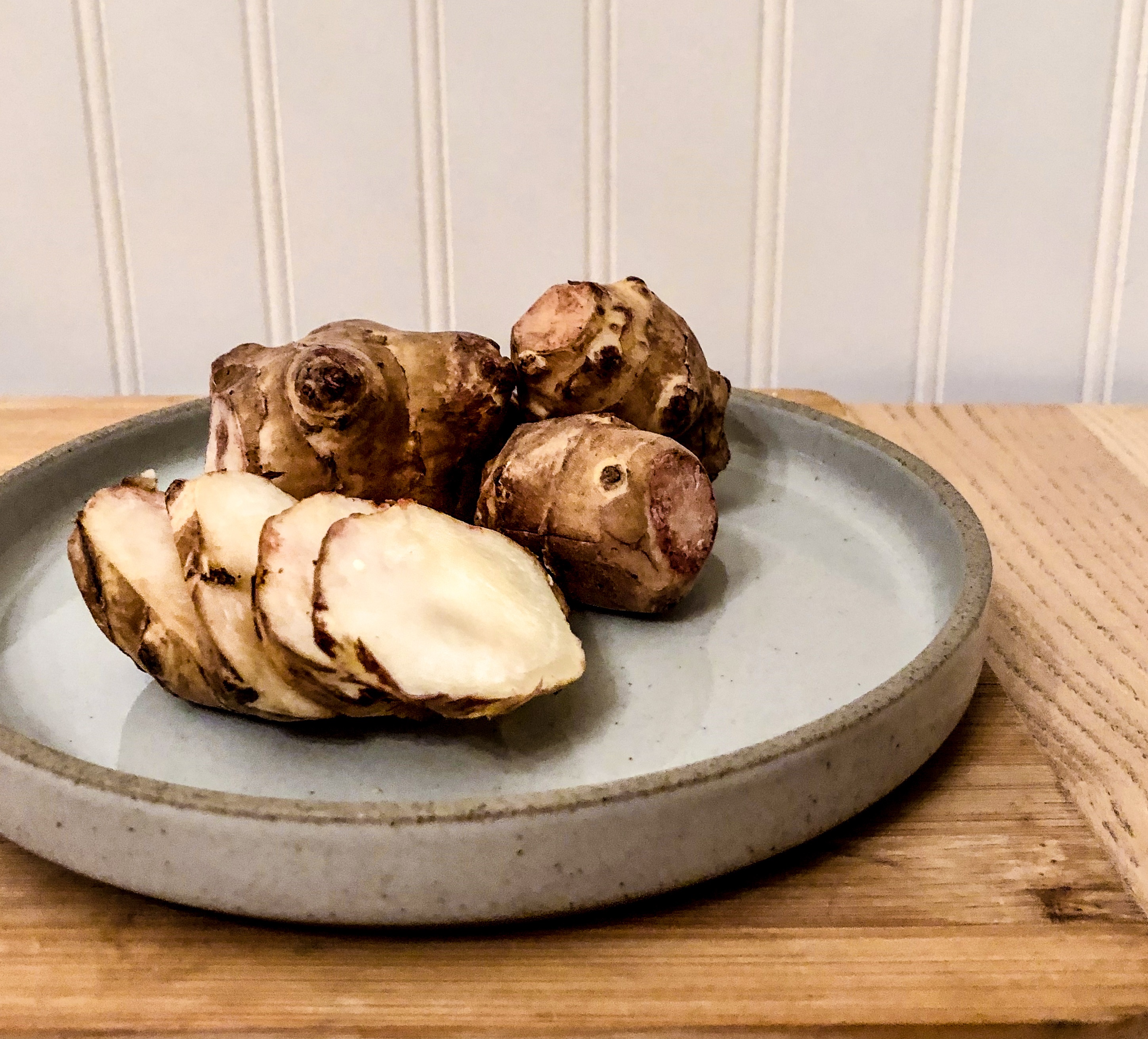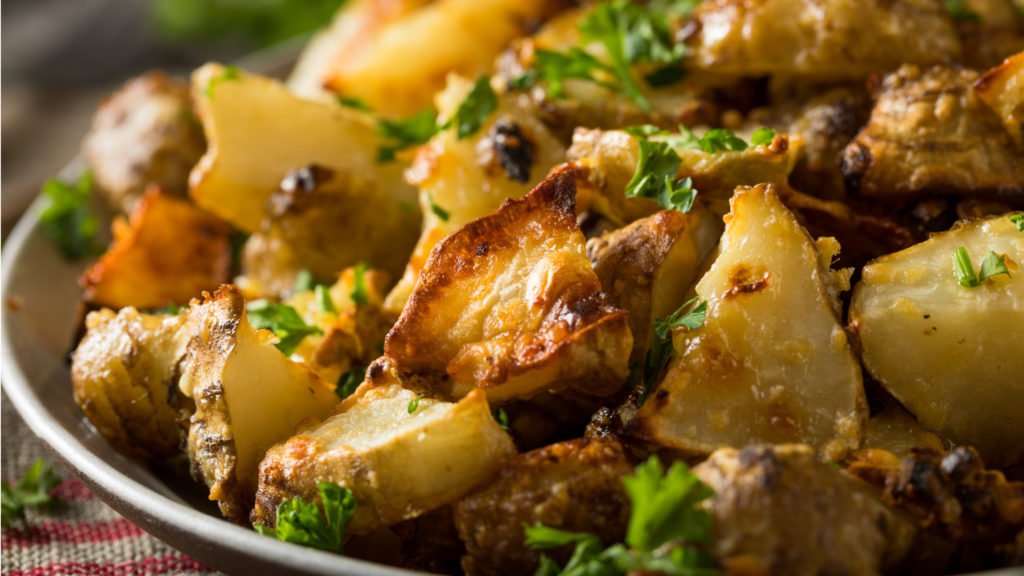What are Sunchokes?

You’ve probably passed by humble sunchokes on your way to the root vegetables in our produce department. Maybe you were unsure how to prepare it, or were unimpressed by its appearance. However, despite its unexceptional look, sunchokes are versatile and have a ton of fiber. These low-carbohydrate, ginger-root-looking tubers are a great veggie option to fuel you and your family, either roasted with olive oil and thyme or served raw with your favorite hummus or dip.
What are sunchokes?

- This member of the sunflower family is native to North America, growing in the wild and cultivated on farms.
- The flowering part of the plant resembles a bright yellow sunflower. You eat the root or tuber, which has thin, papery skin and a white, creamy interior.
- Sunchokes are also called “Jerusalem artichokes,” but look nothing like artichokes and have no apparent ties to Jerusalem. The name is associated with early-world Italian explorers who thought they tasted similarly to artichokes and looked like girasole (“jeer-uh-SOLE-ay”) or “sunflower” in Italian.
What do sunchokes taste like?

- Sunchokes are mild, sweet, and crunchy, with a nutty taste similar to water chestnuts, hazelnuts, and jicama.
What is the nutritional value of a sunchoke?
- Sunchokes are a great source of iron, magnesium, potassium, and calcium; are super high in fiber and low in carbohydrates; and contain inulin.
- Although inulin has certain healthful benefits, it can cause gassiness or bloating when eaten in excess. Eating a handful-sized amount shouldn’t cause any problems, but eating in moderation is recommended.
What do I do with sunchokes?

- Sunchokes can be eaten raw, sliced and served alongside your favorite hummus or dip.
- Sunchokes can often be substituted in recipes that call for potatoes and carrots.
- Chop them into 1-inch pieces with other root veggies, such as potatoes, beets, and sweet potatoes; drizzle with olive oil, thyme, and sea salt; and roast in the oven at 425°F for 25-35 minutes or until soft and golden.
- Slice into thin pieces on a mandolin and fry in 300°F oil to make sunchips that are sweet and crunchy with a creamy interior.
Sunchokes look unimpressive on the shelf, but don’t let that deceive you! Sunchokes can be a fun new root vegetable to try, adding variety to your grocery cart.
Explore Lakewinds recipes for ideas on new meals and foods to try.
